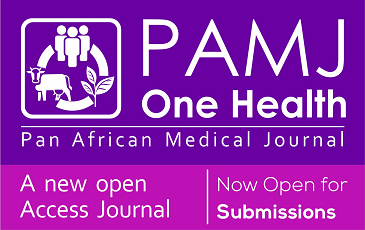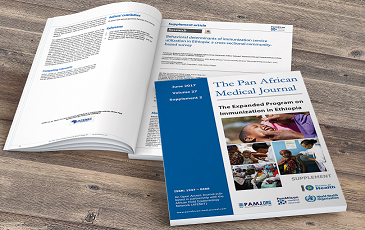Hip obturator dislocation: a case report
Ahmed Ligati, Ayoub Boushabi, Hamza Batmi, Yassine Sebai, Otmane Msahli, Naoufel Boutiyeb, Hicham Ait Benali, Mohammed Shimi
Corresponding author: Ahmed Ligati, Department of Orthopedic Surgery and Traumatology, University Hospital Mohamed VI Tangier, Tanger, Morocco 
Received: 01 Nov 2023 - Accepted: 30 Nov 2023 - Published: 28 Mar 2025
Domain: Orthopedic surgery
Keywords: Dislocation, anterior luxation, obturator, hip, case report
©Ahmed Ligati et al. PAMJ Clinical Medicine (ISSN: 2707-2797). This is an Open Access article distributed under the terms of the Creative Commons Attribution International 4.0 License (https://creativecommons.org/licenses/by/4.0/), which permits unrestricted use, distribution, and reproduction in any medium, provided the original work is properly cited.
Cite this article: Ahmed Ligati et al. Hip obturator dislocation: a case report. PAMJ Clinical Medicine. 2025;17:28. [doi: 10.11604/pamj-cm.2025.17.28.42089]
Available online at: https://www.clinical-medicine.panafrican-med-journal.com//content/article/17/28/full
Hip obturator dislocation: a case report
Ahmed Ligati1,&, Ayoub Boushabi1, Hamza Batmi1, Yassine Sebai1, Otmane Msahli1, Naoufel Boutiyeb1, Hicham Ait Benali1, Mohammed Shimi1
&Corresponding author
In case of a post-traumatic hip dislocation, immediate management is necessary to reduce the risk of aseptic necrosis. Prompt assessment and reduction of dislocation is essential for a successful outcome. Early mobilization of the hip joint is also important to prevent joint stiffness and reduce the risk of avascular necrosis. Physical therapy may also be helpful to strengthen the muscles and improve the range of motion. Very few cases are reported in the literature.
An anterior hip dislocation caused by trauma is comparatively rare compared with a posterior dislocation. Dislocations of the obturator account for 5% to 18% of all hip dislocations, but it is also comparatively rare [1-2]. Due to the very specific anatomy of the hip joint, one of the most congruent joints in the human body, this rarity has its roots. There are several stabilizing structures surrounding this joint, including muscles, capsulo-labral structures, and ligamentous structures, which provide high stability and make it necessary to have a high-energy trauma to dislocate it [3]. To achieve long-term functional outcomes and a good prognosis, the reduction must take place within 6 hours to avoid avascular necrosis [4]. We report here the case of a 36-year-old man who presented with a pure obturator dislocation of the left hip after a road accident.
Patient information: we report the case of a 36-year-old man, smoker, with no previous medical history, who was involved in a road traffic accident, a pedestrian hit by a car.
Clinical findings: on examination, his left hip was in flexion abduction external rotation (Figure 1). Any movement was very painful and limited.
Diagnostic assessment: the patient was conscious GCS 15/15, hemodynamically and respiratory stable, and had no neurovascular problems. A standard pelvic radiograph revealed a pure obturator dislocation of the left hip, with no associated fractures (Figure 2).
Therapeutic intervention: an external maneuver was used to reduce the limb under sedation three hours after the trauma. In the first instance, traction was used in the limb's axis and secondary flexion of the hip was used along with adduction and internal rotation. Dislocation reduction was confirmed by the feeling of an audible jerk. An examination of the limbs after reduction found that the hip was stable in flexion-extension, internal and external rotation, abduction and adduction, and that the vascular nerve examination was normal. X-rays were completed to verify the reduction and repeat the lesion assessment, which confirmed the dislocation was reduced without associated lesions (Figure 3).
Follow-up and outcomes: treatment after reduction included 12 weeks of discharge and oral anticoagulant prophylaxis after reduction. A walking stick was used for rehabilitation. At an 18-month follow-up, the patient showed slight pain after effort without stiffness, with control X-rays that were unremarkable.
Patient perspective: "I'm feeling much better now that my limb has been successfully reduced. I want to express my gratitude to the medical staff for aiding me in returning to my normal daily life. I am committed to continuing the treatment and attending regular follow-ups."
Informed consent: the patient gave full verbal consent, demonstrating clear understanding. The patient was very satisfied with his progress.
To ensure the proper management of traumatic hip dislocation, a comprehensive understanding of its mechanism and associated fracture patterns is crucial. Studies involving postmortem experiments have revealed that obturator dislocation can be induced through the combined movements of external rotation and abduction while the hip is in a flexed position [5]. The noticeable deformity of the limb makes diagnosing traumatic hip dislocation relatively straightforward in Accident and Emergency units. However, to confirm the diagnosis, standard radiographs are employed. During the clinical examination, special attention should be given to identifying any potential vascular complications, as there have been documented cases of anterior dislocations linked to these injuries in the medical literature [6-8].
Traumatic hip dislocation is a grave injury as it profoundly affects the long-term prognosis of the femoral head, giving rise to significant complications, primarily characterized by the risk of osteoarthritis and post-traumatic necrosis [9]. These complications can have lasting conse-quences for the individual's hip function and overall quality of life. Early and appropriate management is crucial to mitigate the impact of these serious issues and improve the chances of a favorable outcome for the patient. The rarity of anterior obturator hip dislocation is due to the strong anterior capsule and the Y-shaped ligament of Bigelow [9]. These anatomical structures provide significant stability to the hip joint, thus limiting the occurrence of this type of dislocation. Theoretically, applying post-reduction traction for a period of 3 to 6 weeks may facilitate healing of the capsulo-labral structures. However, current literature does not provide evidence supporting the clinical benefits of using this approach to reduce the long-term risk of avascular necrosis of the femoral head.
According to Catonné et al. [10] their recommendation for managing anterior dislocations involves early non-weight bearing, followed by a transition to total weight-bearing on the 15th day, along with avoiding external rotation for 3 weeks. This treatment approach is aimed at optimizing the healing process and minimizing complications associated with anterior dislocations of the hip. The standard recommendation for full discharge after a hip dislocation is typically 2 to 3 months and complete weight-bearing is prohibited for the first 3 months. However, some studies have indicated that immediate partial weight-bearing might not be as risky as previously thought.
Anterior hip dislocation is a rare occurrence in the population. Immediate closed reduction is the crucial first step in treating these injuries. Vigilant follow-up is essential, especially to identify and address complications such as post-traumatic chondrolysis, osteoarthritis, and avascular necrosis. To effectively manage anterior hip dislocations and minimize potential complications, early diagnosis, immediate closed reduction, and careful post-treatment monitoring are vital.
The authors declare no competing interests.
All the authors have read and agreed to the final manuscript.
Figure 1: left lower limb in a vicious attitude, hip in flexion abduction and rotation
Figure 2: anteroposterior X-ray of the pelvis showing a left obturator dislocation
Figure 3: anteroposterior X-ray of the pelvis after reduction
- Dawson I, Van Rijn ABB. Traumatic Anterior Dislocation of the Hip. Arch Orthop Trauma Surg. 1989;108(1):55-7. PubMed | Google Scholar
- Shimi M, El Idrissi M, Dahmani O, El Ibrahimi A, Daoudi A. La luxation antérieure obturatrice pure de la hanche. À propos de 2 cas. Tunisie Orthopédique. 2010;3:73-75. Google Scholar
- Epstein HC, Wiss DA. Traumatic anterior dislocation of the hip. Orthopedics. 1985 Jan;8(1):130; 132-4. PubMed | Google Scholar
- Dellanh YY, Abalo A, Fortey K, Akpoto MY, Akloa K, Yaovi EJ et al. Luxation obturatrice de la hanche: à propos d´un cas. Pan African Med J. 2015;22(1). Google Scholar
- Pringle JH. Traumatic dislocation at the hip joint. An experimental study on the cadaver. Glasgow Med J. 1943 Feb;139(2):25-40. PubMed | Google Scholar
- Holt GE, McCarty EC. Anterior Hip Dislocation with an Associated Vascular Injury Requiring Amputation. J Trauma. 2003 Jul;55(1):135-8. PubMed | Google Scholar
- Hampson WG. Venous Obstruction by Anterior Dislocation of the Hip Joint. Injury. 1972 Aug;4(1):69-73. PubMed | Google Scholar
- Sahin V, Karakas ES, Aksu S, Atlihan D, Turk CY, Halici, M. Traumatic Dislocation and Fracture-Dislocation of the Hip: A Long-Term Follow-Up Study. J Trauma. 2003 Mar;54(3):520-9. PubMed | Google Scholar
- Phillips AM, Konchwalla A. The pathologic features and mechanism of traumatic dislocation of the hip. Clin Orthop Relat Res. 2000 Aug:(377):7-10. PubMed | Google Scholar
- Catonné Y, Meyer A, Sariali E, Biette G. Luxation de hanche sans fracture au cours d´activités sportives. In: Rodineau J, Besch S (eds) Pathologie du complexe pelvi-fémoral du sportif. Amsterdam: Elsevier, 2009;88-99. Google Scholar








